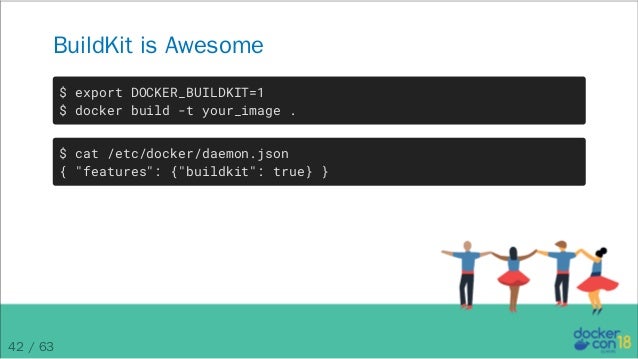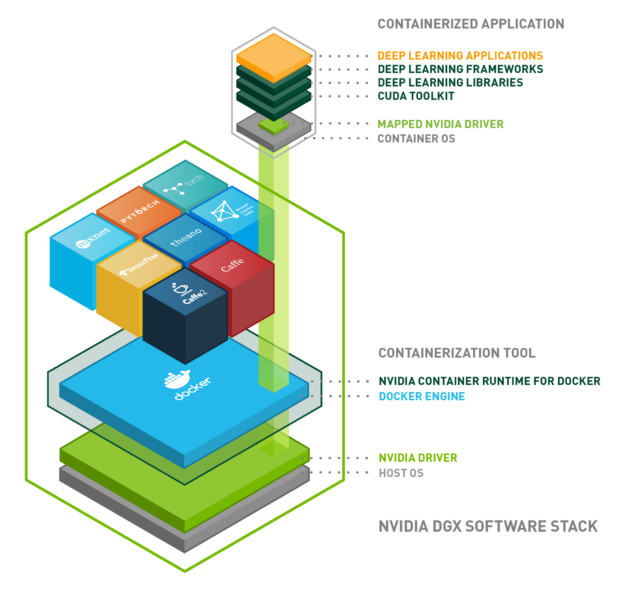What is docker Daemon?
- I am new in Docker and CICD I am using a vps with Ubuntu 18.04. The docker of the project runs locally and works fine. I don’t quite understand why the server is trying to find the docker on http, not on tcp. Override.conf; docker service status. Daemon.json; gitlab-ci.yml.
- When you start Docker Desktop in Windows container mode, if C: ProgramData Docker config daemon.json does not exist, it will get created with some default values. You can create it beforehand or edit it afterwards (and restart Docker Desktop). Or you can use the UI (Settings / Docker Engine), which validates the changes.
- Oct 20, 2017 For daemon.json case, there isn't a command to list all the effective configuration for docker daemon, and I even don't know whether dockerd read the daemon.json I create, or which daemon.json it tried to read.
- So in P3 of the Harden Docker with CIS series, I’ll continue with the hardening process of the Docker installation which we setup in the P1. We’ll start with the module two of the benchmark (CIS Docker Benchmark v1.2.0) i.e. Docker daemon configuration. There are seventeen items in total out of which one is “Not scored”, thus.
Just ps -ef grep dockerd, then all configurations are there. For daemon.json case, there isn't a command to list all the effective configuration for docker daemon, and I even don't know whether dockerd read the daemon.json I create, or which daemon.json it tried to read. And docker info is not including all the settings.
The Docker daemon is a service that runs on your host operating system.
It currently only runs on Linux because it depends on a number of Linux kernel features, but there are a few ways to run Docker on MacOS and Windows too.

What is daemon.json?
daemon.json is the file name which is being used to Configure Docker daemon. There are two ways to configure the Docker daemon:
- Use a JSON configuration file. This is the preferred option, since it keeps all configurations in a single place.
- Use flags when starting dockerd.
The preferred method for configuring the Docker Engine is using a configuration file. You can create this file if it doesn’t already exist. The –config-file flag can be used to specify a non-default location.
Docker Docker Daemon Json Configuration File
Location of docker configuration file
- Linux – RHEL – The default location of the configuration file on Linux is /etc/docker/daemon.json
- Linux – Ubuntu – The default location of the configuration file on Linux is /etc/docker/daemon.json
- Windows – %programdata%dockerconfigdaemon.json. The configuration file can be found at ‘C:ProgramDataDockerconfigdaemon.json’.
Some options can be reconfigured when the daemon is running without requiring to restart the process
The list of currently supported options that can be reconfigured is this:
- debug: it changes the daemon to debug mode when set to true.
- cluster-store: it reloads the discovery store with the new address.
- cluster-store-opts: it uses the new options to reload the discovery store.
- cluster-advertise: it modifies the address advertised after reloading.
- labels: it replaces the daemon labels with a new set of labels.
- live-restore: Enables keeping containers alive during daemon downtime.
- max-concurrent-downloads: it updates the max concurrent downloads for each pull.
- max-concurrent-uploads: it updates the max concurrent uploads for each push.
- default-runtime: it updates the runtime to be used if not is specified at container creation. It defaults to “default” which is the runtime shipped with the official docker packages.
- runtimes: it updates the list of available OCI runtimes that can be used to run containers.
- authorization-plugin: it specifies the authorization plugins to use.
- allow-nondistributable-artifacts: Replaces the set of registries to which the daemon will push nondistributable artifacts with a new set of registries.
- insecure-registries: it replaces the daemon insecure registries with a new set of insecure registries. If some existing insecure registries in daemon’s configuration are not in newly reloaded insecure resgitries, these existing ones will be removed from daemon’s config.
- registry-mirrors: it replaces the daemon registry mirrors with a new set of registry mirrors. If some existing registry mirrors in daemon’s configuration are not in newly reloaded registry mirrors, these existing ones will be removed from daemon’s config.
- shutdown-timeout: it replaces the daemon’s existing configuration timeout with a new timeout for shutting down all containers.
- features: it explicitly enables or disables specific features.

Docker Tutorials Fundamental To Advanced-2021 Crash Course:- https://bit.ly/3hOIbTB
- How to download a package using Maven from Artifactory? - August 11, 2021
- Collection of Best Articles Submission websites for SEO and Content Promotion - August 10, 2021
- SRE (Site reliability engineering ) Use Cases & Its implementations - August 10, 2021
Docker includes multiple logging mechanisms to help youget information from running containers and services.These mechanisms are called logging drivers.
Each Docker daemon has a default logging driver, which each container usesunless you configure it to use a different logging driver.

In addition to using the logging drivers included with Docker, you can alsoimplement and use logging driver plugins.Logging driver plugins are available in Docker 17.05 and higher.
Configure the default logging driver
To configure the Docker daemon to default to a specific logging driver, set thevalue of log-driver to the name of the logging driver in the daemon.jsonfile, which is located in /etc/docker/ on Linux hosts orC:ProgramDatadockerconfig on Windows server hosts. The default loggingdriver is json-file. The following example explicitly sets the defaultlogging driver to syslog:
If the logging driver has configurable options, you can set them in thedaemon.json file as a JSON array with the key log-opts. The followingexample sets two configurable options on the json-file logging driver:
If you do not specify a logging driver, the default is json-file. Thus,the default output for commands such as docker inspect <CONTAINER> is JSON.
To find the current default logging driver for the Docker daemon, rundocker info and search for Logging Driver. You can use the followingcommand on Linux, macOS, or PowerShell on Windows:
Docker Daemon.json Configuration Options
Configure the logging driver for a container
When you start a container, you can configure it to use a different loggingdriver than the Docker daemon’s default, using the --log-driver flag. If thelogging driver has configurable options, you can set them using one or moreinstances of the --log-opt <NAME>=<VALUE> flag. Even if the container uses thedefault logging driver, it can use different configurable options.
Docker Docker Daemon Json Config Converter

The following example starts an Alpine container with the none logging driver.
To find the current logging driver for a running container, if the daemonis using the json-file logging driver, run the following docker inspectcommand, substituting the container name or ID for <CONTAINER>:
Docker Docker Daemon Json Config
Configure the delivery mode of log messages from container to log driver
Docker provides two modes for delivering messages from the container to the log driver:
Docker Docker Daemon Json Configurator
- (default) direct, blocking delivery from container to driver
- non-blocking delivery that stores log messages in an intermediate per-container ring buffer for consumption by driver
The non-blocking message delivery mode prevents applications from blocking due to logging back pressure. Applications are likely to fail in unexpected ways when STDERR or STDOUT streams block.
WARNING: When the buffer is full and a new message is enqueued, the oldest message in memory is dropped. Dropping messages is often preferred to blocking the log-writing process of an application.
The mode log option controls whether to use the blocking (default) or non-blocking message delivery.

Docker Daemon.json Configuration
The max-buffer-size log option controls the size of the ring buffer used for intermediate message storage when mode is set to non-blocking. max-buffer-size defaults to 1 megabyte.
The following example starts an Alpine container with log output in non-blocking mode and a 4 megabyte buffer:
Use environment variables or labels with logging drivers
Some logging drivers add the value of a container’s --env|-e or --labelflags to the container’s logs. This example starts a container using the Dockerdaemon’s default logging driver (let’s assume json-file) but sets theenvironment variable os=ubuntu.
If the logging driver supports it, this adds additional fields to the loggingoutput. The following output is generated by the json-file logging driver:
Supported logging drivers
The following logging drivers are supported. See the link to each driver’sdocumentation for its configurable options, if applicable. If you are usinglogging driver plugins, you maysee more options.
| Driver | Description |
|---|---|
none | No logs are available for the container and docker logs does not return any output. |
json-file | The logs are formatted as JSON. The default logging driver for Docker. |
syslog | Writes logging messages to the syslog facility. The syslog daemon must be running on the host machine. |
journald | Writes log messages to journald. The journald daemon must be running on the host machine. |
gelf | Writes log messages to a Graylog Extended Log Format (GELF) endpoint such as Graylog or Logstash. |
fluentd | Writes log messages to fluentd (forward input). The fluentd daemon must be running on the host machine. |
awslogs | Writes log messages to Amazon CloudWatch Logs. |
splunk | Writes log messages to splunk using the HTTP Event Collector. |
etwlogs | Writes log messages as Event Tracing for Windows (ETW) events. Only available on Windows platforms. |
gcplogs | Writes log messages to Google Cloud Platform (GCP) Logging. |
logentries | Writes log messages to Rapid7 Logentries. |
Limitations of logging drivers
The docker logs command is not available for drivers other than json-fileand journald.